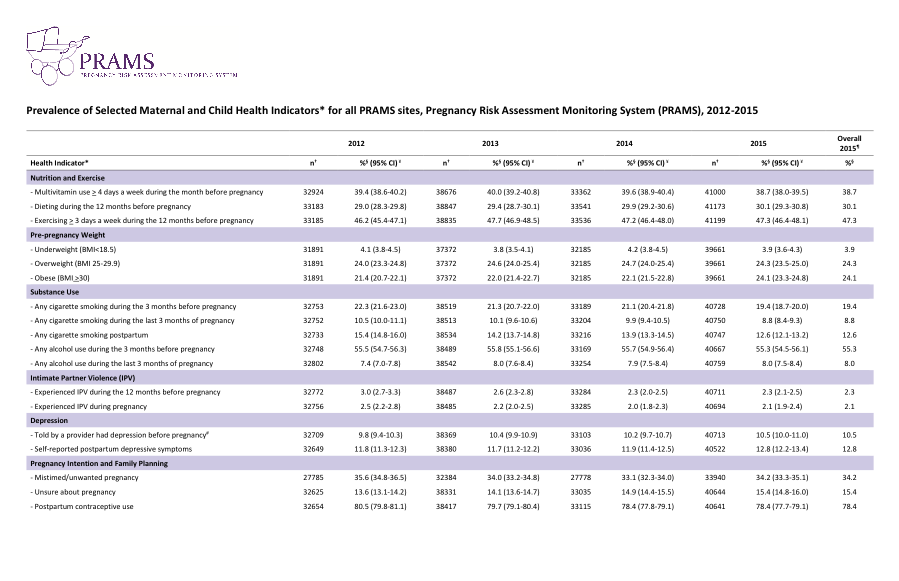Start a public health degree at American Military University. |
By Dr. Carol Hoban
Faculty Member, Public Health, American Military University
Maternal and child health care is an ever-growing area of public health at the federal and state levels. These programs seek to improve the health of women and children in the United States before, during and after pregnancy.
The latest data from Healthy People 2020 indicate that the United States had a 6.2 rate of infant deaths per 1,000 live births in 2016, whereas the rate was just 4.4 outside the United States.
Two of the goals of Healthy People 2020 for maternal and child health are:
- Leading indicator MCH-1.3 (Maternal Child Health) to reduce the rate of all infant deaths within one year
- Leading indicator MCH-9.1, to reduce the total of preterm births. Preterm live births in the U.S. in 2017 were 10.3%, whereas preterm births abroad were 8.8%.
Furthermore, maternal mortality was 20.7% in 2018 for the United States. American women are more than three times as likely as Canadian women to die in the maternal period and six times as likely to die as Scandinavians, according to the Centers for Disease Control and Prevention.
In fact, the U.S. lags behind other developed countries, despite tremendous funding for maternal and child health. So why are the maternal mortality and preterm rates higher for the U.S. and what can we in public health do to address these disparities?
One reason for the higher pregnancy-related death rates in the U.S. could be that more and more women in the U.S. are conceiving at an older age, where women are already at a higher risk for hypertension.
Another reason cited is hospitals’ lack of preparations when dealing with a complication from pregnancy. Finally, federal and state funding is very low for maternal and child health issues in the U.S.
According to the Centers for Disease Control and Prevention (CDC), there are a number of federal programs dedicated to improving maternal and child health in the U.S.
PRAMS Gathers Data about Maternal Pregnancy Experiences
One such program is the Pregnancy Risk Assessment Monitoring System (PRAMS), a joint project between the CDC and state health departments that originated in 1987.
PRAMS gathers data about maternal experiences before, during and after pregnancy. Currently, PRAMS surveillance covers about 83% of all births in the United States.
PRAMS consists of a core set of questions developed by the CDC and a second set of questions chosen and tested by each participating state. The program is unique. The states can gather data tailored to each state’s needs. PRAMS data can be used to monitor and improve the health of women and children, along with examining emerging health issues in maternal and child health.
The table below lists some of the health indicators gathered from all PRAMS sites within the U.S. from 2012 to 2015.

Other Federal Programs to Improve the Health of Women and Children
Another CDC initiative is the Maternal and Child Health Epidemiology Program (MCHEP). This program assigns epidemiologists and fellows to local and state health departments, as well as to tribal groups to research ways to improve the health of women and children. The 25-year-old program has many partnerships, including with the March of Dimes and the American Academy of Pediatrics (AAP), that provide services or help to influence policy changes within the maternal and child healthcare field.
On a national level, the Department of Health and Human Services’ Health Resources & Services Administration (HRSA) has a division of maternal and child health that supports many programs and initiatives dedicated to improving the health and well-being of women and children.
Title V is one of the largest federal block grant programs providing key support for the nation’s women and children. In FY 2017, the program served nearly 99% of all infants in the United States.
The Maternal and Child Health Block Grant Program funded 59 states and jurisdictions to provide health care and public health services for an estimated 56 million people. They included pregnant women, infants, children, children with special health care needs, and their families. That means that 86% of all pregnant women, 99% of infants and 55% of children nationwide benefitted from a Title V-supported service.
Of the more than 48 million children served, Title V supported direct and/or enabling services for almost 2 million children with special health care needs.
These are just a few examples of the federal programs that serve the women and children in the U.S. to improve the health and well-being of all women and children by reducing disparities and the incidence of morbidity and mortality.
About the Author
Dr. Carol Hoban earned her Ph.D. in cellular molecular biology and physiology from Georgia State University in 2008. She earned her MPH degree in 1997 from the Rollins School of Public Health at Emory University.
Dr. Hoban has worked in maternal and child health and vaccine-preventable disease. She was the project director for the Pregnancy Risk Assessment Monitoring System (PRAMS) in Georgia for over six years and was also the project director for the Georgia Immunization Study for over seven years. Dr. Hoban has numerous publications for her work in both vaccine-preventable diseases and maternal and child health. She is also currently a peer reviewer for the Maternal and Child Health Journal.

Comments are closed.